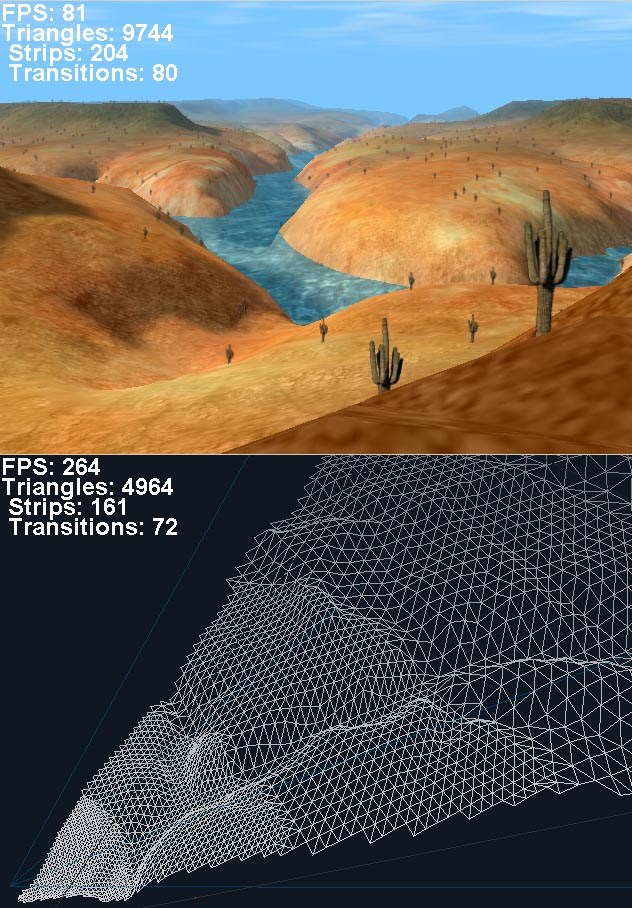 |

Submitted by , posted on 14 May 2002
|
 |

Image Description, by

These are pictures from my Terrain engine (yes yet another one!). What makes this one special is the frustum culling technique (no quad tree, just a frustum projection onto two min/max height planes followed by a polygon fill approach to culling the perimeter) and a Triangle Strip Preserving LOD (level of detail) based with geo-morphing (vertex interpolation between levels of detail). You can look at the paper on this project and download the demo at http://chat.carleton.ca/~eszoka/tstriplod/tstrip.htm (note: demo takes 30 seconds to generate the terrain texture, but this is only done once).
Other features include fast collision detection on the mesh, quake style wavy-water, terrain height relief texturing, terrain lighting/shadows, lens flare and sprites that only draw if the LOD of the terrain beneath them is appropriate.
|
|

